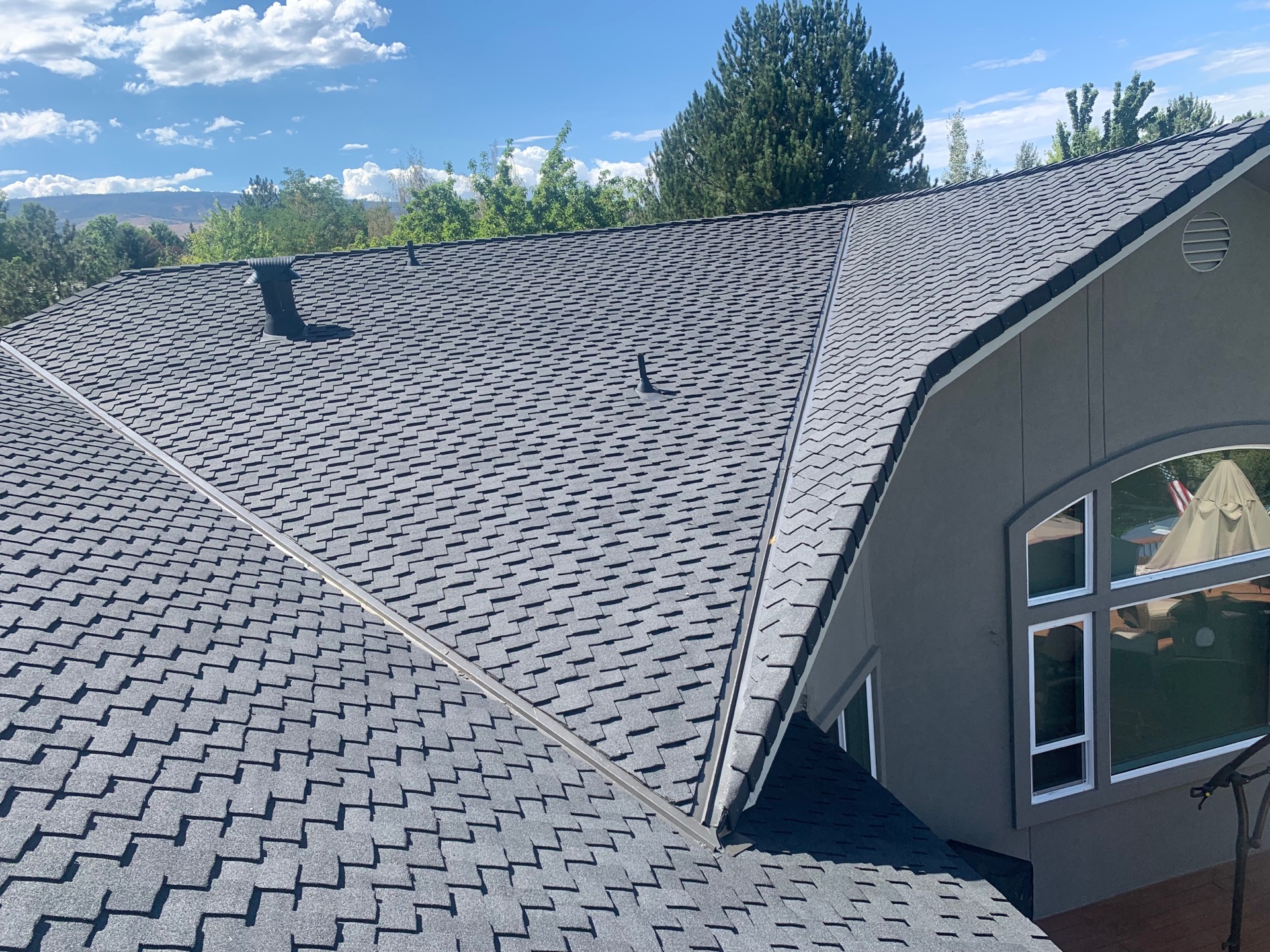Ideal Practices for Ensuring Proper Roof Air Flow
A well balanced intake and exhaust air vent proportion, generally 1:300, plays an essential duty, with intake vents ideally put at the reduced side of the roof for trendy air entry and exhaust vents at the height for warm air departure. Maintaining insulation away from vents is critical to protect against airflow limitation.
Understand Air Flow Fundamentals
Appropriately comprehending ventilation essentials is essential for making certain the durability and efficiency of roof covering systems. Efficient air flow mitigates dampness accumulation and temperature extremes in the attic, both of which can result in significant structural damage in time. A well-ventilated roofing assists in preventing common problems such as mold development, timber rot, and ice dams, which can jeopardize the honesty of the roof covering products and the underlying frameworks.
The key objective of air flow is to assist in the motion of air, permitting a constant exchange between the indoor and exterior atmospheres. This balance is achieved through a mix of consumption and exhaust vents that interact to preserve ideal airflow. Intake vents, normally situated along the soffits or eaves, allow fresh air to get in the attic room room, while exhaust vents, commonly situated at or near the roofing system ridge, make it possible for hot, humid air to leave.
Secret factors affecting the performance of roofing system ventilation consist of proper positioning, adequate sizing, and making certain that both consumption and exhaust vents are unobstructed. Regular assessment and upkeep are essential to determine potential blockages, damage, or ineffectiveness in the ventilation system, therefore protecting the roof covering's efficiency and longevity.
Kinds Of Roofing Vents
Roofing vents play an essential duty in keeping effective attic room ventilation and, by expansion, the total wellness of the roofing system. Numerous types of roofing system vents are offered, each with one-of-a-kind benefits tailored to certain roof covering needs.

Soffit vents are set up under the eaves and operate in tandem with roofing system vents to ensure a balanced consumption and exhaust system. By enabling cooler air to enter from below, soffit vents promote the expulsion of warm air via upper vents. Gable vents, situated on the exterior walls of the attic room, offer an additional effective service, particularly in homes with gable roofings.
Examine Your Current Ventilation

Next, take into consideration the age and condition of your roof products and air flow components. Older systems may not conform with present structure codes or may have weakened with time, decreasing their efficiency. Conduct a detailed examination to determine any indicators of wear and tear, such as corrosion, damages, or spaces that could endanger the system's efficiency.
Furthermore, measure the attic room temperature level and moisture levels. High temperatures and humidity can suggest poor air flow.
Installation Best Practices
Effective installment of roof covering air flow systems is critical for making certain optimal efficiency and long life. Proper installment starts with comprehending the details air flow requirements of the roof covering and the structure it covers. This includes calculating the proper proportion of intake to exhaust vents, usually sticking to the 1:300 regulation, which states one square foot of ventilation for every single 300 square feet of attic room flooring room.

Consumption vents need to be set up at the roofing system's lower side, commonly in the soffits, to permit great air to enter. Exhaust vents, on the various other hand, ought to be set up near or at the roof covering's optimal to facilitate the leave of cozy, damp air.
Seal all air vent links diligently to avoid air leakages and possible water seepage. Use top quality products and follow supplier standards to make certain longevity and effectiveness. Additionally, incorporating ridge vents with baffles can substantially boost air flow efficiency by preventing wind-driven rainfall and snow from going into the attic.
Ultimately, precise installment of roof covering air flow systems mitigates possible issues such as mold and a fantastic read mildew development, ice dams, and architectural damage, making certain the roof covering's integrity and the Get the facts building's overall wellness.
Normal Maintenance Tips
Uniformity in maintenance practices is fundamental to making certain the long-term performance of roof ventilation systems. Routine assessments are vital, ideally done biannually-- in the spring and fall. Throughout these evaluations, ensure that vents are devoid of debris, nests, and various other obstructions that might impede airflow. Look for any signs of wetness build-up or mold and mildew, as these can show inappropriate ventilation or leakages (roofing companies in gainesville florida).
Make use of a soft brush or a vacuum cleaner to get rid of dust and debris from intake and exhaust vents. Be careful not to harm the vent screens or louvers throughout the process.
Correct insulation is equally essential. Make certain that attic insulation does not block the vents, as this can drastically limit air movement. If any kind of insulation has actually changed or settled, rearrange or change it to preserve a reliable obstacle.
Lastly, change any type of harmed or missing components promptly. Broken vents, broken shingles, or deteriorated blinking can all add to inadequate air flow and must be attended to without delay. Routine maintenance makes certain that the roof covering ventilation system functions optimally, thereby prolonging the lifespan of the roof itself.
Conclusion
Guaranteeing proper roofing ventilation is vital for keeping the efficiency and toughness of a roofing system. Adherence to the 1:300 her comment is here intake and exhaust vent proportion, coupled with the tactical placement of vents, is essential.
A balanced intake and exhaust vent proportion, generally 1:300, plays a critical duty, with intake vents preferably positioned at the lower edge of the roof for cool air access and exhaust vents at the top for cozy air departure. Intake vents, commonly situated along the soffits or eaves, permit fresh air to enter the attic room space, while exhaust vents, often situated at or near the roof covering ridge, make it possible for hot, moist air to run away.
Soffit vents are mounted under the eaves and job in tandem with roof covering vents to guarantee a well balanced intake and exhaust system. By permitting cooler air to go into from below, soffit vents facilitate the expulsion of warm air via top vents. Adherence to the 1:300 intake and exhaust air vent proportion, coupled with the strategic placement of vents, is crucial.